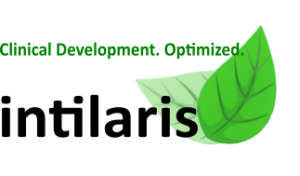Now, more than ever, It is becoming increasingly more evident that pharma companies in general and clinical development organizations in particular, must focus on Clinical Development Excellence as a way to improve productivity and throughput.
R&D costs are increasing
Considering all scientific breakthroughs and achievements in our understanding of biology, molecular targets and mechanisms of actions in the past decade, we would expect much better outcomes in our clinical development efforts. However, that is not the case. We still experience increases in terms of costs and timelines, while the likelihood of a successful outcome for our therapies is declining. The cost of developing a drug that gains market approval is calculated at 2.6 billion USD, according to the report from Tufts Center for the Study of Drug Development [1].
Why is that so?
In our practice, it has become evident that even though we have become much more scientifically knowledgeable and wiser our efforts in Clinical Development practice lack the element of ‘engineering mindfulness’. Being more engineering ‘savvy’ we would be better in Planning, Designing and Executing clinical development activities, resulting in Clinical Development Excellence.
However, turning our medical experts and biologists all of a sudden in engineering experts with an appropriate mindset to optimize the processes and be very innovative and creative in their own fields is hardly possible. We would need to turn the table a bit around and allow the influence of resources with engineering mindset with a good sense for innovation and technology to contribute ‘solving’ the productivity challenges in the clinical development.
What are the essential steps to achieve Clinical Development Excellence?
Looking at the R&D challenges in general, and clinical development in particular, from an engineering perspective, it is quite clear that the solution is in:
- Specifying the vision (Target Product Profile – TPP)
- Defining the road-map (detailed and up-to-date Clinical Development Planning)
- Applying the best practice (Innovation, Risk Mitigation, Operation)
The essentials of the solution may seem obvious at first, however, a large number of development organizations today would seem to be deficient in some aspects.
For example, Target Product Profile (TPP) is typically not precise, or out-of-date, or not completely aligned with the clinical trials that are being conducted due to various reasons.
Clinical Development Plans are often patchy, not up-to-date, do not include the latest knowledge from the industry when it comes to specificity of the indication or the regulatory views.
Applying the best practice is not done in a structured and systematic way that incorporates the ‘learning’ not only from own organization but from the industry overall.
Clinical Development Excellence – benefits
When we focus on and implement Clinical Development Excellence as a day to day practice of the development organizations, we experience improvements in:
- Stakeholder alignment (end-to-end in clinical projects)
- Risk mitigation (incorporating industry learning’s about risks)
- Innovation and final product differentiation
- Clinical operations performance
The common denominator for all those improvements is the early, complete and up-to-date planning in all aspects of clinical projects from TPP to final approval. Without such comprehensive planning and 360° view into our development we are flying blind, lose focus (don’t keep “eye on the ball”) and waste time and resources on additional efforts that could have been avoided.
intilaris LifeSciences is specializing in clinical development processes, best practices, risk management and innovation. Using our process and data engineering mindset we bring the new indication ‘industry learning’ to our clients for the benefit of their Clinical Development Excellence.
Please reach out to us for an independent and expert consultation on this topic.
[1] DiMasi JA, Grabowski HG, Hansen RA. Innovation in the pharmaceutical industry: new estimates of R&D costs. Journal of Health Economics 2016;47:20-33.


